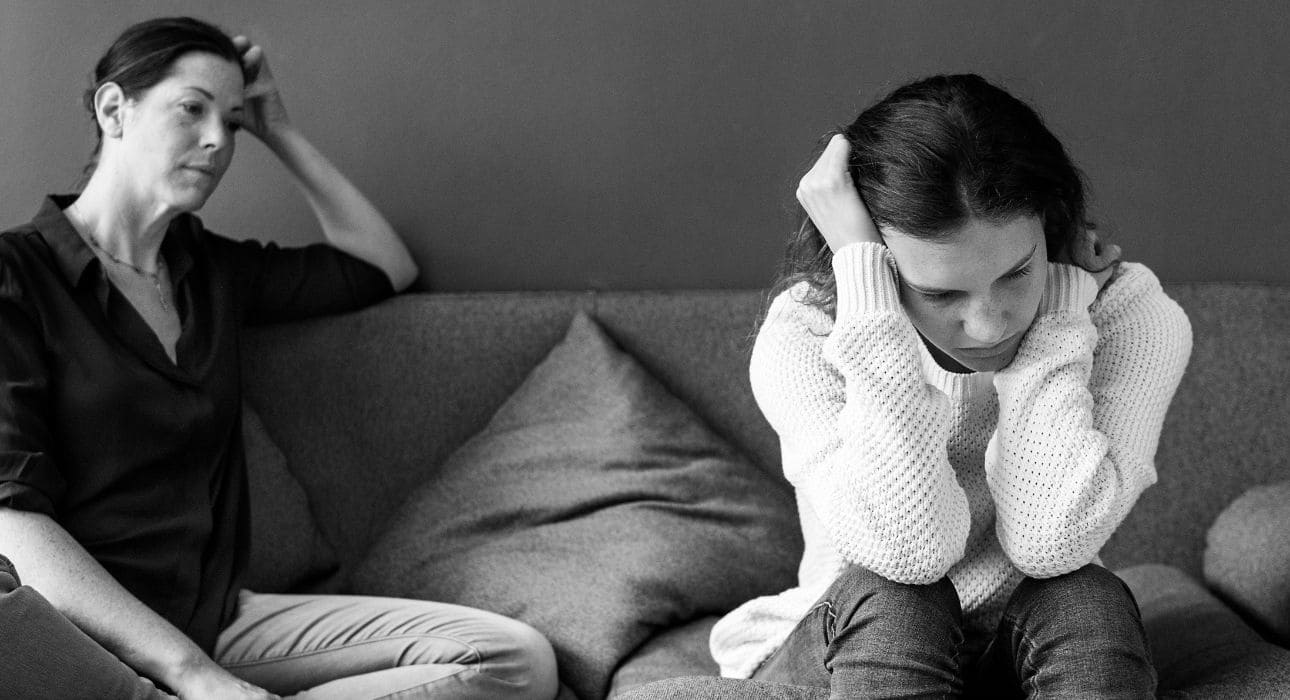Borderline Personality disorder is a complicated mental health disease that affects how people control their emotions, interact with others, and see themselves. It is distinguished by intense and volatile emotions, which cause difficulty in relationships and daily functioning. Personality disorder is diagnosed when a person’s conduct significantly impairs adaptive functioning and/or causes personal distress, deviating from the typical range of variance observed in most people.
Personality disorders are classified into three types, with BPD falling into the dramatic, emotional, and unpredictable groups. People suffering from BPD frequently dread being abandoned, which can cause them to be extremely sensitive to perceived rejections or changes in other people’s behaviour. This dread can drive attempts to escape desertion, sometimes by rash or aggressive behaviours.
Their emotions might shift swiftly; they can be confident and joyous one minute and then severely melancholy or irate the next. They may have identity issues and are constantly unsure of their identity and life goals. Relationships can be turbulent because people may see others as flawless or completely flawed, rapidly alternating between admiration and annoyance.
Symptoms
- Deep fear of being left behind and a desire to prevent it at all costs.
- Intense feelings that fluctuate rapidly, such as being extremely joyful one minute and depressed or hopeless the next.
- Feeling uncertain about their identity, which frequently varies based on the people they are with.
- Unable to sustain long-term relationships and frequently view others as good or bad.
- Most of the time feeling empty or as though something is missing.
- Impulsively engaging in potentially risky behaviours, such as binge eating, drug or alcohol misuse, or unsafe driving.
- Suicidal or self-harming thoughts are used as coping mechanisms.
- Experiencing intense anger and finding it difficult to control.
- Feeling suspicious or paranoid
Emotional symptoms
Emotional symptoms are a key characteristic of BPD. People with BPD frequently experience more powerful emotions than others, and feelings can become overwhelming, particularly during times of stress. Once these intense emotions have taken hold, they may find it difficult to quiet down or return to a state of balance. This increased emotional sensitivity makes routine tasks seem much more difficult to manage.


One common emotional symptom is intense anger, which can feel uncontrollable at times. This anger is often triggered by fears of being abandoned, ignored, or neglected, even in situations where these fears might not be grounded in reality. When anger builds up, it can cause emotional outbursts that may be disturbing to those around the individual. People with BPD frequently experience shame or remorse for their actions once the anger subsides. These feelings can have a severe impact on their self-esteem, making them feel worse about themselves and feeding a vicious cycle of emotional discomfort.
Self-harm is another symptom seen by some people with BPD. This could include self-harming behaviours such as cutting or burning, which are regularly used to cope with overwhelming emotions. Some people use self-harm to express their inner pain, which is too intense to put into words. Others may use it as a kind of self-punishment when they are feeling guilty or stressed.
While it may bring short respite, it eventually adds to the emotional and physical load they bear. These emotional symptoms underscore the profound difficulties that persons with BPD experience every day. Understanding these experiences can increase empathy and support, as well as motivate people to seek professional help and healthy methods to deal with their emotions.
Impulsive behaviour
- Reckless spending: This happens when someone makes sudden or excessive purchases without thinking about the financial impact. They might pull out their credit cards and impulsively buy expensive items. Often, this behaviour is linked to emotional distress, as they are seeking comfort or a brief moment of happiness.
- Substance misuse: Uncontrolled abuse of drugs, alcohol, or other substances, including people involved in excessive use of alcohol, illegal drugs, or prescription medications, for them, it is a means of “escaping emotional distress”, numbing overwhelming feelings, or coping with stress.
- Unsafe sexual activity: Individuals with BPD may engage in unsafe sexual activity as a way to manage intense emotional states or establish a sense of connection and validation. This behaviour is often impulsive and can stem from a deep-seated fear of rejection or abandonment, leading them to prioritize immediate emotional relief over long-term consequences.
- Binge eating: eating large amounts of food in a short period, often feeling out of control during the episode. They begin to eat excessive amounts of junk food even when they are not hungry. The main reason might be a way to cope with emotional pain, offering temporary relief and distraction.
Relationship struggles
People with Borderline Personality Disorder (BPD) often struggle to maintain stable and healthy relationships due to challenges like intense emotions, fear of abandonment, and an unclear sense of identity. A deep fear of being left alone or rejected is common, which can lead to clingy or controlling behaviour. For example, they might become overly dependent on their partner or monitor their actions excessively, trying to avoid feeling abandoned.
One pattern seen in the relationships is known as “push-pull dynamics”. This means they may switch between seeing someone as perfect and idealizing them, to seeing them as flawed or not good enough, known as devaluation. These extreme shifts can confuse and hurt their partners, creating instability and tension in the relationship.


People with BPD also tend to have intense emotional; reactions, even to small issues. These reactions can lead to frequent arguments or conflicts over minor disagreements. Additionally, they may have difficulty trusting others and often suspect betrayal or bad intentions, even when there’s no evidence to support these fears. This lack of trust can lead to jealousy, accusations, or emotional withdrawal, which further strains relationships.
Another challenge is their unstable sense of self. They may struggle with knowing what they want, their values, or personal goals, which can make their behaviour seem unpredictable to others. This uncertainty about themselves can make it hard to build and maintain consistent, healthy relationships.
Causes
Family history
BPD often runs in families, suggesting it can be hereditary. Research shows that people with a close relative, like a sibling or parent who has BPD or similar conditions are more likely to develop it too. Certain genes linked to controlling emotions and impulsive behaviour might increase the risk, but genetics alone don’t cause BPD.
Brain Changes
People with BPD often have differences in how their brain works, especially in areas that control emotions and impulses. Studies show their amygdala (the emotion centre) is more active, while their prefrontal cortex (which helps with decision-making and self-control) is less active. These differences may explain why people with BPD are more emotionally sensitive, act impulsively, and struggle to manage their emotions.


Environmental, cultural, and social factors
Adverse childhood experiences, such as abuse, neglect, or trauma, are highly linked to BPD development. A large proportion of people with BPD report feeling physical, emotional, or sexual abuse, or parental neglect during their early years. Such experiences can impair emotional growth and attachment, resulting in patterns of dread, mistrust, and emotional instability.
BPD may emerge as a result of poor early connections with caregivers. BPD features are more prone to emerge in children who receive inconsistent care, are abandoned, or do not feel validated emotionally. Difficulty in forming secure attachments in childhood leads to fear of abandonment and difficulty trusting others. The likelihood of developing BPD may be increased by social and cultural factors. An Environment with high levels of stress, stigma, or lack of support can amplify emotional instability and maladaptive coping mechanisms.
People who are highly sensitive or emotionally reactive in childhood may struggle to develop coping mechanisms. A combination of biological vulnerability and environmental stress can create a “perfect storm” for BPD development.
BPD results from the combination of many elements rather than a single cause. For instance, childhood trauma might interfere with emotional development and bonding in a person who has a genetic tendency to emotional sensitivity. BPD-specific characteristics of emotional dysregulation, impulsivity, and unstable relationships are the outcome of this interplay.
Treatment
Managing BPD has improved because the disorder is now better understood and diagnosed. Therapy is tailored to each person’s goals and strengths. Psychotherapy is the main treatment but medication can sometimes help with the symptoms like depression or psychotic episodes. While there isn’t a specific medication for BPD, it can reduce the intensity of certain symptoms. Research shows that treatment works and many people with BPD can improve their lives and manage their symptoms better.
Informing patients about their diagnosis, anticipated course, risk factors, and available treatments should be the initial step. Establishing clear limits and ensuring a consistent approach from all participating doctors is necessary to prevent splitting behaviours, in which certain providers are viewed as “good” and others as “bad.” Life-threatening behaviours, such as self-harm or suicidal thoughts, should be treated first, and provocative behaviours should never be encouraged.
Treating Borderline Personality Disorder involves self-care, therapy, and sometimes medication. The main goals are to improve relationships, reduce impulsive behaviours and help manage intense emotions effectively.
Psychotherapies
Treatment of BPD usually involves psychotherapies there are lots of different types of psychotherapy but they all involve talking and spending time helping you better understand your thoughts and emotions. A psychotherapist not only listens and discusses important issues with you but also helps find solutions to problems. And, if needed, supports you in changing your attitudes and behaviours. The goal of BPD therapy is to help you feel more in control of your thoughts and emotions.


Dialectical Behaviour Therapy (DBT)
This therapy is specifically for people with BPD. Two main factors contribute to the condition. The first is emotional sensitivity, where even small amounts of stress can feel overwhelming and hard to manage. The second is invalidation during childhood, where their feelings may have been dismissed or ignored making them feel like their emotions didn’t matter. These factors can create a harmful cycle of intense emotions and feelings of guilt or worthlessness. This cycle can sometimes lead to unhealthy behaviours like self-harm as a way to cope.
DBT helps break this cycle using 2 key ideas. The first is dialectics which teaches you to see situations in a more balanced way rather than thinking in extremes like “all good or bad”. The second is validation, where your therapist helps you understand that your feelings are real and acceptable. With these tools, therapists work with you to develop healthier ways to cope with stress and emotions while challenging harmful behaviour like self-harm.
Mentalization-based therapy
Mentalization-Based Therapy (MBT) is a long-term psychotherapy for treating Borderline Personality Disorder (BPD). It focuses on improving the ability to mentalize, which means understanding your thoughts and feelings, questioning whether they are realistic, and recognizing that others have their own emotions and perspectives.
People with BPD often act impulsively, such as self-harming without taking a moment to think about their thoughts or what’s driving their actions. MBT helps them learn to pause and reflect on their thoughts, analyzing whether they are helpful or valid. It also teaches individuals to understand and consider other people’s feelings and to recognize how their actions might impact those around them. This helps healthier relationships and better emotional control.
Schema therapy
Schema therapy is a type of therapy that helps people recognize and change deep patterns or “schemas” formed in childhood. These schemas often come from unmet emotional needs or negative experiences like neglect or criticism and can lead to unhealthy behaviour and emotions as adults. The therapy focuses on replacing harmful patterns with healthier ways of thinking and acting, helping people feel better and improving their relationships and lives.
Cognitive Behavioural Therapy (CBT)
Cognitive Behavioural Therapy (CBT) is a structured and short-term therapy that helps people understand and change negative thought patterns and behaviours. It emphasizes how thoughts, feelings, and behaviours are interconnected. For example, negative thoughts can lead to unhealthy emotions and behaviours. CBT teaches individuals to challenge these unhelpful thoughts and replace them with more positive and realistic ones.
It also helps people develop healthier ways to cope with challenges in their lives. This therapy is effective for treating issues like anxiety, depression, and personality disorders. By learning these skills, people feel more in control of their emotions and can improve their daily lives and relationships.
Self-care Techniques
If you are feeling angry, frustrated, or restless, there are a few things you can try to calm down.
- You could rip some paper or hit a pillow to release some of that built-up tension.
- Doing some exercise, like going for a walk or jumping around, can help burn off that frustration.
- You could also listen to loud music to match your energy and let out those emotions.
- Another good option is to do something practical, like gardening or woodwork, which can distract you and help you feel more in control.
If you are feeling anxious, panicky, or tense there are different ways to soothe yourself.
- Making a hot drink and drinking it slowly, while paying attention to the taste, smell and feel of the mug, can help ground you at the moment.
- Taking 10 deep breaths, and counting each one aloud, can calm your mind.
- You could write down everything you can observe around you, like the time, date, and details about the room, to help you focus on the present.
- Taking a warm bath or shower can create a soothing atmosphere and distract you from anxious thoughts. These activities can help manage strong emotions and bring a sense of calm.
Doing longer term Self-care
- Talk to someone: Talk to a therapist, family member, or trusted friend about how you’re feeling. You can feel supported and process your feelings more easily if you talk about them.
- Keep a mood diary: Every day, keep a record of your feelings, triggers, and actions. It would be simpler to control your moods if you can recognize trends and comprehend the factors that affect them.
- Prepare for challenging times: Make a crisis plan that includes coping mechanisms, emergency contacts, or a list of things to do to divert your attention while you’re feeling upset. Having a strategy can help you feel more in control and less impulsive.
- Create a box of self-care: Stuff a box full of reassuring things, such as aromatic candles, pictures, stress-relieving equipment, or cherished novels. Use it to help you ground yourself and feel more at ease during trying times.
- Focus on what really matters: Identify your values and priorities, and set small goals aligned with them. This can help you stay motivated and feel a sense of purpose in your life.
- Look after your physical health: Get enough rest, consume a nutritious diet, and exercise regularly. Maintaining your physical health can assist control your mood since it has a big impact on your emotional well-being.
- Practice relaxation and mindfulness: Practice deep breathing techniques, mindfulness, or meditation to help you stay in the moment and successfully handle strong emotions.
- Delay Impulsive Decisions: When feeling overwhelmed, pause and give yourself time to think before acting. This can prevent self-destructive behaviours and promote healthier choices.
- Take part in support groups: Connect with others who share similar experiences to gain advice, encouragement, and a sense of community.
- Celebrate Small Wins: Recognize your progress, no matter how small. Acknowledging achievements boosts confidence and reinforces positive behaviour.







Leave feedback about this